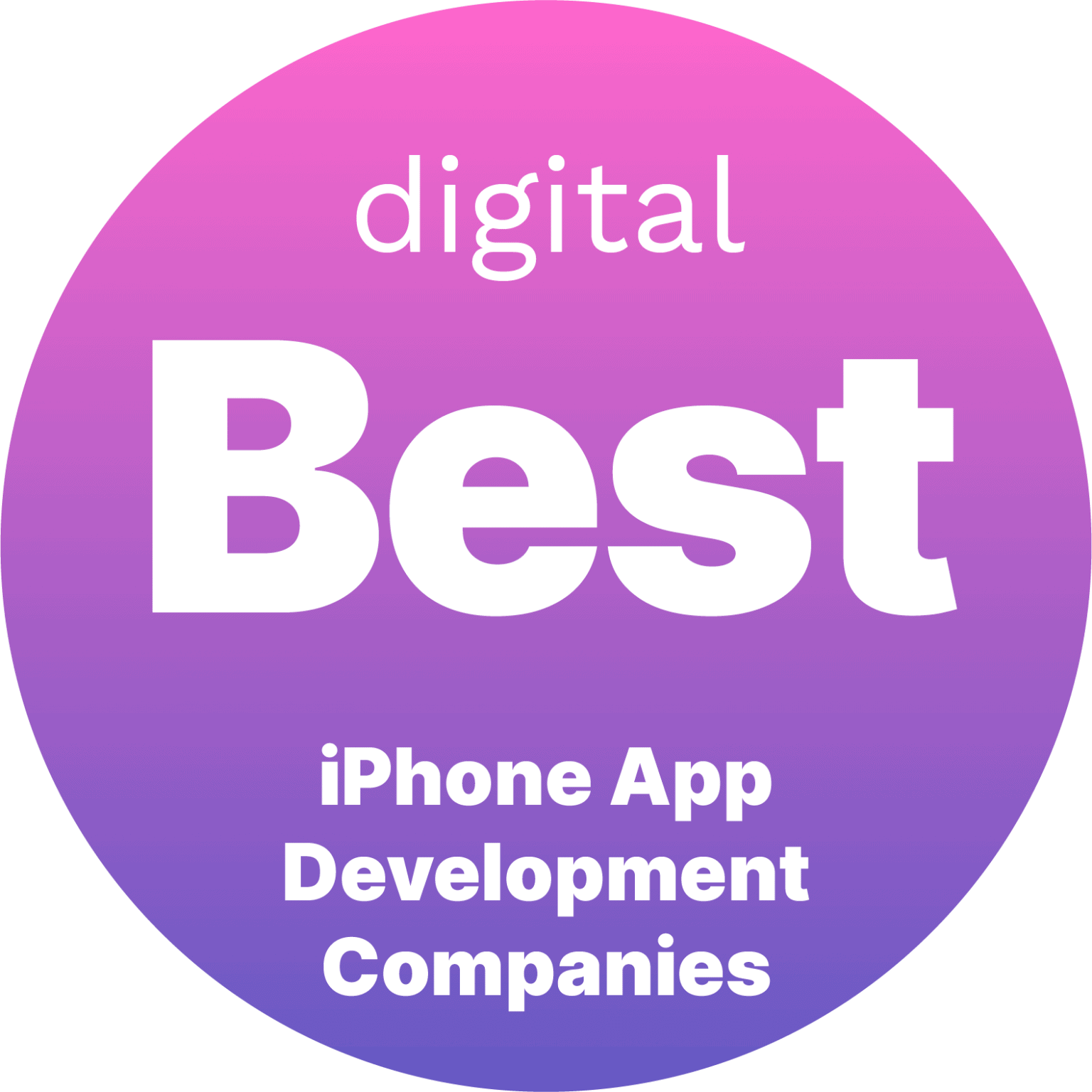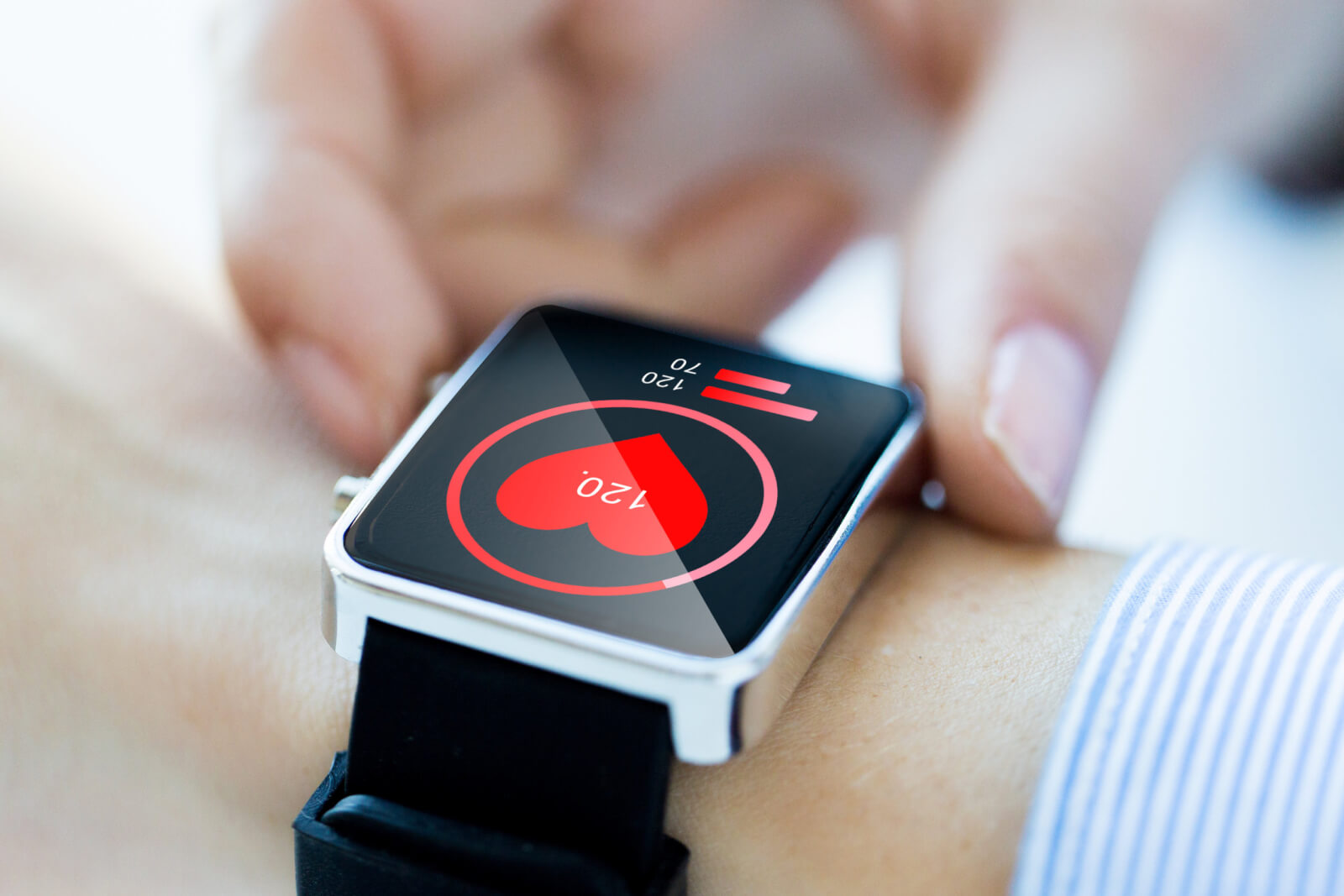Key Takeaways:
- Start with a solid blueprint: A well-crafted project brief is the blueprint for your mobile app. It bridges the gap between your initial idea and your stakeholders’ understanding, aligning everyone on goals and expectations from the outset. Projects without clear goals and plans are far more likely to fail – in fact, lack of clear objectives is cited as the top factor in 37% of project failures. Investing time in a brief up front can dramatically improve your app’s chance of success.
- Cover all the key components: A powerful mobile app project brief should concisely cover what you’re building and why. This includes a project overview (vision and background), clear objectives and success metrics, defined scope (what’s in and out), target audience, key features, timeline and milestones, budget constraints, key stakeholders, and any risks or assumptions. By laying out these elements, you create a single source of truth that guides your team and keeps the project on track.
- Prevent scope creep and costly surprises: Defining requirements early saves you costly rework later. A thorough brief sets firm boundaries to prevent scope creep (one of the biggest causes of delays and overruns). It also serves as a communication tool to get stakeholder buy-in and ensure everyone knows their role. As one study noted, upfront discovery clarifies goals and prevents confusion, rework, and budget blowouts. We’ve included a free template to help you get started – use it to save time, avoid misunderstandings, and confidently kick off your mobile app project.

In today’s fast-paced app development world, diving into coding without a plan is like building a house without a blueprint. You might end up with a structure, but will it be what you envisioned – or will you waste time and money fixing avoidable mistakes? The stakes are high: Poor project planning and unclear requirements cause teams to squander nearly 10% of every dollar spent. And in the competitive mobile app arena, missteps early on can mean the difference between a successful launch and another failed project.
That’s where a mobile app project brief comes in. A project brief is more than just documentation – it’s your app idea’s game plan. In simple terms, a project brief is a concise document that communicates the core vision and parameters of your project. Think of it as a high-level roadmap: it outlines the what and why of your app (goals, scope, deliverables, timeline) without delving into the nitty-gritty of how to build it. Its primary purpose is to get all stakeholders on the same page before development kicks off. A well-defined brief can significantly impact project success by aligning expectations and minimizing misunderstandings. It serves as a single reference point for everyone involved – from your internal team to any external app developers or designers – so that no matter who reads it, they grasp the vision and direction of the project.
Why is this so important? Consider that organizations using solid project management practices (like starting with clear briefs) boast a 92% success rate in meeting their project objectives. When goals are clear and plans are communicated, teams perform better. On the flip side, lack of clarity is a recipe for failure. Without a project brief, different stakeholders might have conflicting assumptions about the app’s purpose or features. This often leads to scope creep – those “while you’re at it, can we also add…?” requests that can derail timelines and inflate budgets. Scope creep is a notorious project killer; if you don’t clearly define what’s in and out of scope, your project can easily go off the rails, causing delays and cost overruns. By clearly specifying your app’s boundaries in a brief, you keep the team focused on what matters and avoid the trap of trying to build everything at once.
Moreover, a project brief is a powerful tool for stakeholder communication and buy-in. Whether you’re getting approval from executives, onboarding a development agency, or simply rallying your team, a succinct brief helps you present a compelling vision and secure the necessary support. Stakeholders can review the brief and immediately grasp the project’s value, requirements, and constraints. This upfront alignment can save countless emails, meetings, and misunderstandings down the road. (It’s telling that nearly 80% of project managers wish stakeholders were more involved early in projects – getting everyone on board with a brief is exactly how to do that.) In short, taking the time to write a project brief is an investment in your project’s success.
So how do you create a comprehensive project brief that covers all the bases without being overly verbose? Let’s walk through the key components, step by step. By the end of this guide, you’ll know exactly how to write a powerful mobile app project brief – and you can download our free template to jumpstart your own. Remember, spending a few hours now to craft a clear brief can save you weeks of confusion and rework once development is underway. Let’s get started.
What Is a Mobile App Project Brief (and Why Do You Need One)?
A project brief is a high-level document that outlines the essential aspects of your project – sort of a project’s “elevator pitch” on paper. It typically runs just a few pages and concisely describes what you’re building, why you’re building it, who it’s for, and how you plan to approach it. It’s not as detailed as a full project plan, but it hits all the critical points: project goals, scope, key features/deliverables, timeline, resources, and so on. Think of it as the blueprint or game plan for your mobile app. Anyone reading it should quickly understand the project’s vision and the plan to achieve it.
Here are some of the core reasons a project brief is indispensable for a mobile app project:
- Clarity and Alignment: At its heart, a project brief forces you to clarify your vision and get everyone aligned from day one. It documents the goals and bridges the gap between your idea and your stakeholders’ understanding, so there’s no ambiguity about what the app is supposed to accomplish. This alignment early on means fewer misunderstandings later. Team members and decision-makers each interpret the project the same way, which is crucial for coordination.
- Guiding Development: The brief serves as a north star for your development team. As work progresses, team members can always refer back to the brief to remind themselves of the agreed-upon objectives and scope. This keeps the project on track toward the original vision. A good brief also aids in onboarding new team members or external partners – it quickly brings them up to speed on the project fundamentals.
- Preventing Scope Creep: One of the biggest benefits is setting boundaries. By clearly defining the scope of the project – what features and tasks are in scope and what are out of scope – you establish a guardrail against scope creep. Without a defined scope, projects can balloon endlessly, adding “just one more feature” over and over until budgets and timelines blow up. The brief keeps everyone honest about what’s been agreed. As the saying goes, “if it’s not in the brief, it’s not in the project.” This saves you from chasing moving targets. (Remember, scope creep often leads to increased costs and delays, so curbing it is key to finishing your app on time and on budget.)
- Better Risk Management: A thoughtful brief will also note major risks, constraints, or assumptions upfront. Identifying potential challenges early – whether it’s a tight deadline, dependency on a third-party API, or a need for regulatory compliance – allows you to plan for them. You might include a contingency plan or at least flag areas of uncertainty. This proactive approach means fewer nasty surprises mid-project.
- Stakeholder Buy-In and Communication: When you present a crisp project brief to stakeholders (be it executives, clients, or investors), you’re demonstrating that you have done your homework. It becomes much easier to secure approval for the project (and resources like budget or team support) when stakeholders see a clear plan. The brief communicates the project’s value proposition and requirements in an organized way, which builds confidence. It’s also a handy reference throughout the project for status updates – if someone asks “what are we trying to do again?”, the brief has the answer. In essence, it’s a communication tool that keeps everyone from the development team to upper management on the same page.
- Efficiency and Cost Savings: It might seem counterintuitive, but spending time to write a brief actually saves time (and money) later. Why? Because decisions made on paper are far cheaper than decisions made in code. It’s much easier to revise a feature or adjust a goal in a document than after weeks of development. A project brief encourages you to think through the app’s requirements and challenges early. That means catching misalignments or impractical ideas before they consume resources. Consider that projects with poor planning often suffer costly mid-stream changes; by contrast, teams that invest in planning and discovery can greatly reduce mid-project changes and overruns. In other words, plan now, save later.
In summary, a project brief is the foundation of a successful app project. It doesn’t need to be long – usually a few pages of well-structured information is enough. The key is that it’s clear, specific, and agreed upon by all key players. Next, let’s delve into exactly what goes into a powerful project brief for a mobile app. Use the following components as a checklist (or use our free template) to ensure you’ve covered everything important.
How to Write a Powerful Mobile App Project Brief (Step-by-Step)
When you’re ready to create your project brief, approach it as a series of sections or steps. Below are the key elements you should include, and tips on how to craft each one. You can follow this as a step-by-step guide to writing your brief. As you go through each section, remember to keep the writing concise and focused – the goal is to convey the essentials in a way that anyone can understand. Let’s break down the components of a great mobile app project brief:
1. Project Overview and Vision
Start your brief with a Project Overview that paints a clear picture of what you’re building and why. This is a high-level summary – think of it as your project’s elevator pitch. In one or two short paragraphs, answer the following: What problem or need is your mobile app addressing? What is the core idea or solution? And what is the vision for the end product?
 In this section, provide a bit of context or background. For example, you might mention industry trends or user pain points that led to the app idea. If you’ve done market research or user surveys, summarize the key insight (e.g., “busy professionals need an easier way to manage personal finances on the go, which is why we’re creating an app to automate budgeting”). Keep it non-technical and easy to grasp. Even a stakeholder with no technical background should read the overview and immediately understand the app’s purpose and value proposition.
In this section, provide a bit of context or background. For example, you might mention industry trends or user pain points that led to the app idea. If you’ve done market research or user surveys, summarize the key insight (e.g., “busy professionals need an easier way to manage personal finances on the go, which is why we’re creating an app to automate budgeting”). Keep it non-technical and easy to grasp. Even a stakeholder with no technical background should read the overview and immediately understand the app’s purpose and value proposition.
Pro Tip: Write the overview as if you’re describing your app to a potential investor or a busy executive. It should be compelling and succinct. If you find yourself writing a page of text for the overview, try to distill it down – focus on the “what” and “why,” leave the “how” for later sections. For example: “Project Phoenix is a mobile app that [what it does] for [who it’s for], in order to [problem it solves or benefit]. This app aims to [key objective or unique value].” That one or two-sentence statement can then be expanded slightly with a few more details or context. This clarity up front sets the tone for the rest of the brief.
2. Goals and Objectives
After the overview, clearly state your project goals and objectives. What are you trying to achieve with this app? Here, you’ll list the specific outcomes or results you expect from the project. It’s often helpful to break this into a short list of bullet points. Each objective should be specific and measurable if possible. For example, goals could include things like “Provide a seamless platform for users to track daily expenses” or “Acquire 50,000 users in the first year” or “Improve internal workflow efficiency by 30% via mobile automation.”
Make sure your objectives align with business value or user value. A good framework to use is SMART objectives – Specific, Measurable, Achievable, Relevant, Time-bound. For instance, instead of saying “Grow the user base,” a SMART objective would be “Grow the active user base to 10,000 monthly users within 6 months of launch.” If your app is for internal company use, an objective might be “Reduce data entry errors by 50% within the first quarter of adoption.” If it’s a consumer app, maybe “Achieve a 4+ star user rating in app stores within 3 months.” These give your team concrete targets to aim for and later judge success by.
Defining clear objectives isn’t just for show – it has a proven impact on project success. Goals give your team direction and motivation. They also provide a yardstick to measure progress. Projects with clearly defined goals and success criteria tend to stay focused and are easier to manage. (It’s telling that lack of clear goals is the single most common reason projects fail – clarity here can literally make or break your project.) By setting objectives in the brief, you’re proactively steering away from that pitfall. Everyone will know what “success” looks like for the app.
Finally, if there are specific metrics or Key Performance Indicators (KPIs) you plan to track (e.g., daily active users, retention rate, revenue, etc.), mention them here or in a separate “Success Metrics” subsection. This shows how you’ll quantify success. For example, “Success will be measured by a user retention rate of X% after 3 months and an average session length of Y minutes.” Tying metrics to objectives ensures that once the app is launched, you can objectively evaluate if it met its goals.
3. Target Audience and Users
Identify who the app is for. In this section of the brief, describe your target audience or user base in as much detail as is relevant. Are you building the app for consumers (if so, which demographic? e.g., millennials, working parents, students in a certain field)? Or is it for internal employees of a company? Perhaps it’s for a specific industry or profession (doctors, drivers, retail store managers, etc.)? Defining your target users will guide many decisions in development and design, so it’s crucial to spell it out clearly.
Include any relevant user research insights or personas if you have them. For instance, “Primary target users are busy young professionals (ages 25–40) who want to improve their personal budgeting without spending much time. They are tech-savvy, prefer automation, and mostly access financial services via their smartphones.” This kind of description helps everyone envision the end-user. If there are multiple user groups (e.g., drivers and riders in a transportation app, or patients and doctors in a health app), list each and what their needs are.
Understanding your audience influences not just features, but also design and marketing. It ensures the team is building with the end-user in mind at all times. It can also be useful to mention the problem from the user’s perspective here: e.g., “Users currently struggle with X, so we are providing Y as a solution.” This connects the project to real user needs. If applicable, note any specific user requirements or constraints (for example, “users often work in low-connectivity environments, so the app must have offline functionality” or “target users value data privacy highly, so we will need robust security”). These will set important context for the development team.
4. Project Scope (In-Scope and Out-of-Scope)
Scope definition is a critical part of your project brief. Here, you will outline what is included in the project deliverables – and just as importantly, what is not included. By setting these boundaries, you prevent the project from growing uncontrolled. Begin by describing the scope of work for this app: the major features or components that will be part of the product. You don’t need to list every tiny detail, but capture the broad strokes of what the project will deliver. For example: “Scope includes developing a mobile application (iOS and Android) with features A, B, and C, plus a simple web admin dashboard for managing content.”
After listing what’s in scope, explicitly mention any known exclusions – things that some might assume are included but actually are not part of this project. For instance: “Out of scope: the project will not include an in-app messaging system or social media integration in the first version,” if you want to be clear those ideas are off the table for now. This section is where you manage expectations. If a stakeholder later says, “What about feature X?” you can point back to the brief and show whether X was in scope or deliberately left out. It’s a good idea to involve key stakeholders in reviewing the scope section so that everyone agrees on the boundaries.
Setting a firm scope in the brief has a huge benefit: it keeps the team focused and reduces scope creep. Projects without defined scope are prone to expanding beyond their initial boundaries, often leading to increased costs and delays. By contrast, when everyone has signed off on what’s in scope, you have a benchmark to say “no” or “not now” to new requests that would otherwise derail the schedule. (New ideas can be logged for a future phase or version 2.0 instead of sneaking into the current scope.) A clear scope also helps in planning – you can estimate time and cost more accurately when you know exactly what’s being built.
One more thing to include in the scope section is the platforms and technologies if they are predetermined. For example, note if the app will be native iOS and Android, or cross-platform using a framework like Flutter, etc., especially if this is already decided. Similarly, if the project includes backend server development or will rely on existing systems, mention the scope of backend work. For instance, “Scope includes developing a cloud backend (API and database) to support the app” or “The app will integrate with our existing CRM system via API”. These details ensure everyone understands the technical scope as well.
5. Key Features and Functionality
Whereas the scope section outlines the broad boundaries, this Features section highlights the specific functionalities that the app will include. Essentially, you’re breaking down the scope into tangible features or user stories. It can be helpful to list these as bullet points for clarity. For a mobile app, key features might include things like: user registration & login, profile management, core feature X (describe it briefly), payment processing, push notifications, admin panel for content, etc. Tailor this to your app. Focus on the features that define your app’s value. If a feature is complex or critical, you might add one sentence of detail to clarify what it entails.
 It’s important to distinguish must-have features from nice-to-haves. In a project brief, it’s usually best to focus on the must-haves – the core features required to meet the objectives you listed earlier. If you have a lot of features, you can even categorize them (e.g., “MVP Features” vs “Future Enhancements” or “Phase 1 vs Phase 2”) to indicate priority. This helps ensure the team builds the essentials first. Remember, trying to include every conceivable feature in version 1 is a common trap that can doom a project. Many first-time app founders make the mistake of overbuilding – attempting to deliver a “kitchen sink” app with too many features at once – which often leads to delays and wasted resources. To avoid this, identify the core feature set that will accomplish your primary goals and focus on doing those well. You can always add more features later once the core app is successful.
It’s important to distinguish must-have features from nice-to-haves. In a project brief, it’s usually best to focus on the must-haves – the core features required to meet the objectives you listed earlier. If you have a lot of features, you can even categorize them (e.g., “MVP Features” vs “Future Enhancements” or “Phase 1 vs Phase 2”) to indicate priority. This helps ensure the team builds the essentials first. Remember, trying to include every conceivable feature in version 1 is a common trap that can doom a project. Many first-time app founders make the mistake of overbuilding – attempting to deliver a “kitchen sink” app with too many features at once – which often leads to delays and wasted resources. To avoid this, identify the core feature set that will accomplish your primary goals and focus on doing those well. You can always add more features later once the core app is successful.
In fact, you might adopt a Minimum Viable Product (MVP) mindset for your project brief. An MVP is the simplest version of the product that still delivers the main value to users. By defining an MVP feature set, you keep the project lean and achievable. This approach is highly recommended; industry experts note that trying to build an all-in-one app out of the gate is counterproductive. Instead, prioritize the features that matter most. In your brief, you could even explicitly label the feature list as “MVP Features” to signal that these are the items needed for launch, and anything else is secondary. For example:
- MVP Features: User login, Dashboard with expense tracking, Receipt photo capture, Reports and analytics, Settings.
- Excluded or Future Features: In-app social sharing, Multi-currency support, AI-driven recommendations (to be considered in later versions).
By doing this, you set clear expectations that the initial release will concentrate on core functionality. This keeps the project scope under control. It also aligns with agile development best practices, enabling you to get a working product out sooner and gather user feedback.
6. Timeline and Milestones
Every good project brief should address the timeline – when do you plan to start and finish this project, and what are the key milestones along the way? In this section, outline your project’s schedule at a high level. If you have a desired launch date or a deadline (perhaps driven by a business event or investor commitment), mention that upfront. Then, break the timeline into major phases or milestones with target dates. For a mobile app project, typical milestones might include: completion of designs or prototypes, MVP feature development complete, beta testing start, user testing/QA, app store submission, and launch. You don’t need an exhaustive Gantt chart here (detailed scheduling can come later in a project plan), but the brief should give a rough idea of how long the project will take and how it will progress.
For example, your timeline might look like:
- Project Kickoff: January 10, 2025
- Design & Prototyping Complete: Feb 15, 2025
- Development (MVP features) Complete: April 30, 2025
- Beta Testing (Internal) Begins: May 1, 2025
- Public Launch (Version 1.0): June 15, 2025
Adjust this to your project’s needs. If you’re using sprints or an agile approach, you might outline the number of sprints and major deliverables per sprint. The key is to set expectations on timing. Stakeholders reading the brief should know whether this is a 3-month project or a 12-month project, and roughly when major deliverables will happen.
When setting timelines, be realistic and build in some buffer for the unexpected. Software projects often take longer than initially expected due to unforeseen challenges. In fact, studies show that the majority of projects do not meet their original schedule or budget targets – one report found only about 16% of software projects hit their time and cost estimates precisely. With that in mind, avoid overly optimistic dates that assume everything will go perfectly. It’s better to under-promise and over-deliver. If you have any hard deadlines (like “must launch before a conference in September” or “regulatory deadline by Q4”), highlight those so the team knows there’s little wiggle room around that milestone.
Including milestones also helps with monitoring progress. As the project moves forward, these milestones can serve as check-in points to ensure you’re on track. If a milestone is missed, it can trigger a discussion about adjusting scope or adding resources. By having them in the brief, everyone is aware of the critical path from the start.
7. Budget and Resources
In this section, outline the budget for the project and any resource constraints. Stakeholders will be keenly interested in this part, as it deals with money and manpower. If you have an approved budget range, state it (e.g., “Budget for this project is approximately $XYZ”). If the budget is not yet fixed, you might indicate a target or a ballpark figure. The purpose is to set financial expectations: are we talking a quick $20k pilot app, or a $500k large-scale development? The scope and timeline you defined earlier should correlate with the budget – an ambitious app with lots of features and platforms will likely require a higher budget than a simple MVP on one platform. Make sure these pieces tell a consistent story. It can help to mention major budget categories if known, such as allocation for development, design, testing, third-party services, etc., especially if you’re providing a breakdown. For example: “Total budget of $150,000, with approximately $100k for development, $30k for design/UI/UX, and $20k for testing and contingencies.”
Also consider ongoing costs if relevant: if the brief’s audience includes decision-makers, they may appreciate knowing not just the build cost but also expected ongoing costs like server hosting, third-party API fees, or maintenance. However, since this is a project brief (focused on the project to build and launch the app), you can keep the budget to the development effort itself. Post-launch operational costs might be mentioned in passing if significant (e.g., “Note: Does not include ~$X/month in cloud hosting and support costs post-launch”).
If you’re unsure what budget is realistic, do some research or consult developers for estimates during the brief-writing process. Mobile app development costs can vary widely depending on complexity. Even a basic app with a few features requires a significant investment once you factor in design, development, testing, and deployment. For instance, industry data in 2025 shows that building a mobile app can range from tens of thousands of dollars for a simple app to several hundred thousand for a complex, feature-rich app. You should make sure your budget expectations align with this reality. Nothing derails a project faster than discovering halfway through that you only budgeted for half the needed work.
Besides money, outline the resources and team aspect of the project. Who will actually work on this project? You can mention if you have a development team in-house or if you plan to hire an app development agency (and whether you’ve identified one, like Dogtown Media or others). If specific team roles are key (e.g., you will need 2 iOS developers, 2 Android developers, 1 backend engineer, 1 designer, etc.), list them, especially if there are any gaps or hiring needs. Also note any special resources or equipment required (for example, “will need access to XYZ data system or test devices for both iOS and Android”). Essentially, this part should answer: do we have what we need to execute this project within the budget?
Documenting the budget and resources in the brief helps manage feasibility. It ensures everyone understands the project’s scale. If the budget is tight relative to the scope, that will be a red flag (better to catch that now and adjust scope or expectations accordingly). Conversely, if the budget is ample, stakeholders will be assured that the plan is properly resourced. Either way, having this information transparently in the brief facilitates honest conversations about trade-offs between scope, time, and cost – the classic project management triangle.
8. Stakeholders and Team Roles
Every project involves people, so your brief should clearly identify the key stakeholders and team members involved, along with their roles. This section answers “who’s who” in the project. List the primary stakeholders such as the project sponsor or owner (e.g., a department head, product owner, or client who wants the app built), the project manager (if one is designated), and any other high-level stakeholders (perhaps an executive champion or an external client contact). Include anyone who has a major stake or decision-making authority in the project. Next, list the core project team – the people who will actually execute the work or contribute significantly. This could include roles like lead developer, UX/UI designer, QA tester, etc., whether they are internal or from an agency. If you don’t have names yet, list the roles that need to be filled (“TBD” for name). For example:
- Product Owner / Sponsor: Jane Doe, Head of Product (defines vision, approves major decisions)
- Project Manager: John Smith (oversees day-to-day project execution, timelines, coordination)
- Lead Developer: (Name or TBD – responsible for coding and technical decisions)
- UI/UX Designer: (Name or TBD – responsible for app design and user experience)
- QA Lead: (Name or TBD – responsible for testing)
- Stakeholders: Alice (CMO, will provide input on marketing integration), Bob (CTO, will advise on technical architecture), etc.
Clarifying roles helps prevent confusion about who is responsible for what. It’s especially important if you have multiple parties involved (say, an internal team working with an external development partner). Everyone should know who the point of contact is for different aspects. For instance, if a question about requirements comes up, who has final say? If a design choice is needed, who approves it? Laying this out in the brief sets the groundwork for smoother collaboration and decision-making.
This section also ties into communication (which we’ll cover in a moment). Knowing the stakeholder list lets you plan how to keep each of them informed. It’s often useful to note who the end approver of the project is (e.g., “Project Sponsor has final approval of deliverables”), so it’s clear where the buck stops.
Additionally, by listing stakeholders, you implicitly encourage their involvement. Many projects struggle because stakeholders are disengaged until it’s too late. Don’t let that happen. Engage them from the start by circulating the project brief for their input. As mentioned earlier, stakeholder involvement is crucial – nearly 80% of project managers want more stakeholder collaboration during development. Getting their buy-in on the brief is a great first step. It ensures the marketing team, the IT security team, the executives, or whomever else is relevant all nod in agreement on what’s being done.
One more thing: if the mobile app relies on external partners (like an API provider, or a client outside your company), treat them as stakeholders too. For example, if you’re building an app for a client, the client contact is a key stakeholder and should be listed with their role (“approves requirements and accepts final deliverable”). Having a clear stakeholder registry in your brief leaves no ambiguity about who needs to be kept in the loop or consulted for decisions.
9. Risks and Assumptions
No project is without risks. This section of the brief is where you demonstrate foresight by listing potential risks, issues, or assumptions that could affect the project. Identifying risks early doesn’t jinx the project – on the contrary, it shows you’re planning responsibly. Start by brainstorming what could go wrong or any unknowns that exist. Some common types of risks for a mobile app project include:
- Technical Risks: e.g., “Integration with third-party payment gateway might be more complex than expected,” or “Unfamiliarity with a new technology could slow development.”
- Schedule Risks: e.g., “Key developer is only part-time,” or “App Store review process might delay the launch.”
- Budget Risks: e.g., “Potential need for additional software licenses or API usage fees beyond budget.”
- External Risks: e.g., “Upcoming OS updates (iOS/Android) could require rework if they happen during development,” or “A competitor might release a similar feature that changes our priorities.”
- Operational Risks: e.g., “Data security requirements (HIPAA/GDPR) might require additional work,” or “User adoption risk if not enough marketing is done.”
List a few of the most pertinent risks along with an indication of impact or a mitigation plan if you have one. For example: “Risk: Project timeline is aggressive with little slack – Mitigation: will employ agile sprints and frequent check-ins to catch delays early.” You don’t need a full risk register in the brief (that can be a separate document), but highlighting the top 3-5 risks shows you’ve thought about challenges and how to handle them.
Assumptions often go hand-in-hand with risks. These are things you are taking as given for the project to be feasible. If those assumptions turn out false, it could become a risk. For instance: “We assume the client will provide API access to their database by March 1” or “Assume availability of a QA environment for testing” or “Assume that 3rd-party service XYZ will remain operational through the project.” State any such critical assumptions so everyone is aware of them. This can also prompt stakeholders to confirm or correct your assumptions now rather than later.
By being upfront about risks, you reduce their power. A risk acknowledged is much easier to manage than one that blindsides the team. Plus, it encourages a proactive mindset – team members seeing a risk in the brief might start thinking of solutions or contingency plans right away. It’s all part of good project hygiene.
10. Communication Plan
Last but certainly not least, outline how the team and stakeholders will communicate and stay updated throughout the project. Communication breakdowns are a silent killer of projects – one report found that 57% of failing projects cite breakdown in communication as a key factor. To avoid being part of that statistic, set clear communication expectations in your brief.
Answer questions like: How often will the team meet and in what format (daily stand-ups? weekly progress meetings?)? How will you provide progress updates to stakeholders (e.g., weekly status emails, bi-weekly demo meetings, monthly reports)? Who should be included in various communications? Also mention what collaboration tools or channels will be used – for example, “All project communications will be via Slack and email; Jira will be used for task tracking; a weekly Zoom call every Monday will include the core team to review progress.” If the project involves an external client or partner, specify how you’ll interface with them (perhaps a weekly client update call and shared Trello board, etc.).
Key things to define:
- Meeting cadence: e.g., “Team stand-up meetings every weekday at 9am,” or “Stakeholder review meeting on the last Friday of each month.”
- Status reporting: e.g., “Project manager will send a weekly status update every Friday outlining accomplishments, next steps, and any blockers.”
- Communication channels: e.g., “Primary communication via Microsoft Teams; urgent issues via phone.”
- Feedback loops: e.g., “Designs will be reviewed by the product owner via Figma comments; UAT feedback will be collected via a shared Google Doc.”
Including a communication plan ensures everyone knows how we’ll stay in sync. It pre-empts questions like “When is the next update?” or “Where do I find the latest build?” and helps maintain transparency. Good communication keeps trust high and issues visible. It also ties back to stakeholder management – if your stakeholders know they’ll get regular updates and have opportunities for input, they’ll feel more comfortable and stay engaged.
Finally, make sure the communication plan is realistic and agreed upon by the team. There’s no point committing to a daily 2-page status report if no one has time to produce or read it. Find a balance that keeps information flowing without overburdening anyone. Often a mix of short sync meetings and brief written updates works well.
With all these sections completed, you have a comprehensive mobile app project brief! To recap, you’ve articulated the vision and goals, defined the scope and key features, outlined the timeline, set the budget, identified the team and stakeholders, anticipated risks, and set up a communication plan. This document will serve as the foundation of your project. Before moving forward, it’s wise to have all major stakeholders review and sign off on this brief. Their approval means you have alignment – everyone agrees on what’s being built and how. That alignment is priceless; it will help prevent misunderstandings or conflicting agendas later.
Free Template Included: To help you get started, we’ve prepared a Mobile App Project Brief Template that covers all the sections above. You can download it [here](link to template) and fill in each section with your project’s details. The template provides prompts and examples to guide you. Feel free to adapt it to your needs – every project is unique, but the core questions to answer remain largely the same. Using a template can save you time and ensure you don’t accidentally skip an important part. And remember, a project brief isn’t set in stone; it can be updated if major changes occur (though any change should be re-communicated and agreed upon). Treat it as a living document that evolves if needed, but also as a baseline that everyone refers back to.
By taking the time to craft a thorough project brief, you’re investing in the success of your mobile app before a single line of code is written. It’s a step that too many skip – and they pay the price later with chaos or failed projects. With your project brief in hand, you’ll proceed into design and development with confidence. If you’ve vetted your idea and assembled a capable team, the project brief is the final piece that empowers you to execute efficiently. And if you need any assistance – whether in refining your project plan or actually developing the app – don’t hesitate to reach out to experts. At Dogtown Media, for example, we often kick off engagements with a discovery and planning phase just like this, to ensure our clients’ projects are set up for success. We’re passionate about turning well-thought-out briefs into world-class mobile apps.
Good luck with your mobile app project, and happy planning! Now, let’s address some frequently asked questions about writing a project brief to clear up any remaining queries.
Frequently Asked Questions (FAQs): Writing a Mobile App Project Brief
1. Why do I need a project brief for my mobile app project?
A: A project brief is essential because it serves as the blueprint for your app. It ensures that you, your team, and your stakeholders all share a clear understanding of what you’re building and why. Without a brief, it’s easy for misunderstandings to arise – one person might envision a completely different app than another. This alignment document helps prevent that. It also saves time and money by catching ambiguities or bad ideas early (on paper) rather than mid-development. In short, a brief brings clarity, focus, and agreement, which significantly boosts your project’s chances of success. Considering that over one-third of projects fail due to unclear objectives, a brief is your insurance against becoming part of that statistic.
2. What should be included in a powerful project brief?
A: A strong project brief will include all the high-level information about your project. The key components are:
- Project Overview: A summary of the app’s vision and purpose.
- Goals and Objectives: What you aim to achieve (ideally with measurable targets).
- Target Audience: Who the end-users are and their needs.
- Scope: What’s in and out of scope for the project (the boundaries of what you’ll deliver).
- Key Features: The main functionalities the app will have (especially the must-haves for the first release).
- Timeline & Milestones: Major phases and target dates, including expected launch date.
- Budget & Resources: The budget range and key resources or team roles allocated to the project.
- Stakeholders & Team: Who is involved – project owner, team members, and their roles.
- Risks & Assumptions: Any known risks or critical assumptions made in planning.
- Communication Plan: How the team/stakeholders will communicate and stay updated during the project.
This might seem like a lot, but most sections are just a few sentences or bullet points. Together, they give a 360° view of the project. A free template (like the one we’ve included) can help make sure you cover all these bases.
3. How long should a project brief be?
A: Generally, a project brief should be concise – typically anywhere from 1 to 5 pages depending on the project’s complexity. For many mobile app projects, 2-3 pages is a sweet spot. The idea is to include enough detail to be clear and informative, but not so much that it becomes a full technical specification or a tedious read. Remember, the brief is often read by busy executives or team members who need the high-level picture. If it’s too long, it defeats its purpose (people might not read it thoroughly). Aim to be succinct: use bullet points, short paragraphs, and clear headings. If you find the brief getting very long, consider whether some details can be moved to appendices or separate documents (for example, a detailed risk management plan or a full feature backlog might live outside the brief). The brief should cover the what and why at a strategic level. As a rule of thumb, include only as much detail as needed to convey the vision and make decisions. Anything more can be part of follow-up project planning documents.
4. Who should write and review the project brief?
A: The project brief is typically written by the project initiator or manager – often the product owner, project manager, or entrepreneur who is championing the app idea. They have the vision and are in the best position to articulate it. However, writing the brief shouldn’t happen in a vacuum. It’s wise to gather input from key stakeholders while drafting it. For instance, you might consult a lead developer for technical feasibility, a UX designer for user considerations, or a marketing manager for business goals. Once a draft is written, it’s crucial to have all major stakeholders review and sign off on it. This includes the project sponsor (e.g., an executive or client funding the project) and any department heads or team leads whose resources are involved. Their review ensures that the brief is accurate and that there is agreement. Don’t be afraid to iterate on the brief based on stakeholder feedback – it’s much better to iron out disagreements or misunderstandings now than later. Ultimately, while one person may pen the document, a good project brief is the product of collaborative thinking and consensus. Everyone who has a stake should feel confident that it reflects the plan correctly.
5. Is a project brief the same as a project plan or proposal?
A: Not exactly – though they are related. A project brief is typically a high-level overview of the project’s key facts (vision, goals, scope, etc.), as we’ve discussed. A project plan, on the other hand, usually goes into more depth on execution details: it might include detailed task breakdowns, schedules for each task, resource assignments, and more granular management plans (like quality plans, risk mitigation plans, etc.). Think of the project plan as something a project manager uses day-to-day to track and manage the work, whereas the brief is more of a reference for understanding the project at a glance. As for a project proposal, that’s usually a document used to pitch a project or get approval/funding for it. A proposal might contain some of the same information as a brief (to describe what will be done), but it’s often formatted to “sell” the project to decision-makers, and might include business justification, ROI estimates, etc. In many cases, a project brief could be part of a proposal. For example, if you’re pitching your app project to investors or to your company’s leadership, you’d include the key elements (vision, goals, scope, timeline, budget) – essentially presenting the project brief information in a persuasive way. Once the project is approved, that same information becomes the foundation of your project brief for the team. In summary: the project brief is an internal guiding document, the project plan is a detailed execution roadmap, and a project proposal is for obtaining buy-in or approval. All three should be consistent with each other, but they serve different purposes.
6. When should I create the project brief, and can it change later?
A: You should create the project brief at the very start of the project – during the initiation phase. In fact, writing the brief is often one of the first tasks once you have an app idea that you’re serious about pursuing. It comes before development, before design, and usually even before you have a full team assembled. The brief helps you clarify what team and resources you’ll need. By completing the brief, you might even discover you need to do more research or validation (for instance, if while writing the goals you realize you’re not sure there’s a market need, you might pause to validate the idea). It’s a planning tool as much as a communication tool.
As for changes: yes, a project brief can be updated if necessary, but changes should be made with care. Ideally, the brief represents a baseline agreement. Minor updates (like adjusting a timeline due to a slight delay, or adding a small feature that stakeholders agree on) can be incorporated with everyone’s knowledge. However, if there’s a major change in scope or objectives, that’s essentially a different project – you’d want to formally re-align and possibly re-approve the brief. In practice, agile projects might evolve and the brief can evolve too (some companies call an updated brief a “project charter update” or similar). The key is to use version control: keep track of changes and ensure all stakeholders are aware of them. A brief that constantly changes without control isn’t serving its purpose. But a brief that’s rigid and never revisited even when the world changes is also problematic. So, find a balance – lock in the brief when starting development, and only revise it if there’s a compelling reason (and get buy-in on the revisions).
7. Can I use the same project brief for communicating with an app development agency?
A: Absolutely – in fact, a good project brief is one of the best tools you can hand to a prospective development partner. Agencies love clients who come prepared with clear project briefs because it helps them understand your needs quickly and accurately. Your brief essentially becomes the basis for initial discussions, proposals, and eventually the contract scope. If you approach a mobile app development agency (like Dogtown Media, for example) with a well-written brief, you’re likely to get a more precise quote and a smoother collaboration from the get-go. The agency might have follow-up questions or suggest tweaks, but the brief accelerates the discovery process. It shows that you have a concrete vision and have done the necessary homework – which also signals that you’re serious about your project. Just make sure the brief is up-to-date and reflective of what you truly want. One tip: sometimes clients trim down a brief when sharing externally, especially if it contains sensitive info (like internal budget limits or proprietary strategy). It’s okay to have an “external version” of the brief for agencies that omits things you’d rather discuss live (such as exact budget, if you prefer the vendor to estimate independently). But overall, yes, using your project brief to communicate with developers is wise. It sets the foundation for a common understanding and can be referred back to throughout the development cycle with the agency.
8. What if my project brief isn’t perfect? Can I still start development?
A: Don’t worry – a project brief is not about perfection, it’s about clarity. It’s very normal for a brief to evolve from a rough draft to a polished document after getting feedback. The goal is not to write a literary masterpiece; it’s to think through the important aspects of your project. If you’ve covered the key components and everyone agrees on them, your brief is “good enough” to start. It’s better to have an 80% complete brief that everyone has bought into than to delay the project for weeks trying to make it 100% bulletproof. That said, there are a few critical things you really want to nail down (objectives, scope boundaries, and major assumptions) because if those are wrong, the project could head off course. Double-check those areas. Use your team or mentors to review the brief – a fresh set of eyes might catch something you missed or ask a question that reveals a gap. Once you’re comfortable that the brief accurately represents the plan, you can kick off design and development. The brief then acts as a reference. If during development you find new insights or the situation changes, you can course-correct (and update the brief if needed). So, treat the brief as an enabling tool, not a hindrance. The aim isn’t to be perfect on paper; it’s to drive a successful project in reality. A well-thought-out brief just stacks the odds in your favor from the start.





